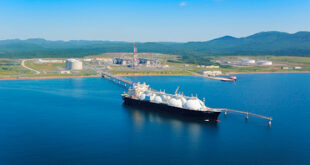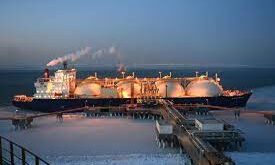The steady increase in Iran’s gas production has provided the domestic petrochemical players with the opportunity to diversify their feedstocks in a bid to tackle the shortages created in the past years.
The insufficient production of vital gas feedstocks has been one of the biggest challenges facing the development of the country’s petrochemical industry throughout the past two decades.
The challenge has mostly been felt by the gas-burning ethane producers struggling with feedstock shortage.
Ethane is among the highest value-added products used as feedstock in petrochemical plants. Each ton of ethane, as the principal element in manufacturing petrochemicals, namely ethylene can generate at least $1,000 in export revenue.
However, in the recent past, the lack of ethane supply made the country to assign a monthly quota of the material to the petrochemical companies.
But the quotas are gradually eliminated as more South Pars Gas Field phases in the Persian Gulf are becoming fully operational. With the development and operation of most phases of South Pars and the countdown for finalization of the remaining phases of the giant gas reservoir on the one hand and the implementation of three crucial gas projects in Assaluyeh and Kangan, the petchem sector will be provided with an abundance of different gas feedstocks.
The domestic demand for ethane is now 5.5 million tons and the envisaged surplus can later be exported.
Current ethane output
The production capacity of ethane from South Pars has reached about 700 million cubic meters per day. With the completion and operation of a number of ongoing projects in the current year, this capacity will definitely exceed 700 million cubic meters.
South Pars is the world’s largest gas field, covering an area of 3,700 square kilometers of Iran’s territorial waters in the Persian Gulf. It adjoins Qatar’s North Field, which measures 6,000 square kilometers.
Once fully operational, the South Pars will produce a total of 10.6 million tons of ethane per year.
Bidboland 2 Refinery and the drilling of new wells in the Khangiran and South Zagros basins can be expected to generate a capacity of 1 billion cubic meters of methane gas per day. Bidboland 2 Refinery has an annual production capacity of about 1.5 million tons of ethane, which is to be transferred to Mahshahr in the first stage of this valuable gas to be fed to some petrochemical complexes.
It can be said that increasing the production of ethane will provide feed for urea, ammonia and methanol projects and complexes from a profit and provide fuel for the entire petrochemical industry.
Ethane production capacity in Asaluyeh currently stands at around 7.5 million tons a year.
There also are plans to increase ethane production in the region in the current fiscal, including the first phase of Bushehr Petrochemical Complex with an annual capacity of 850,000 tons of methane, and Parsian Sepehr Refinery, with 1.3 million tons per year, as well as phases 12 and 14 of South Pars, with a capacity of 1.7 and 1 million tons respectively.
When all the units are operational, the annual production of ethane in Asaluyeh will rise to more than 14 million tons.
Diversification of petrochemical feedstocks
Besides ethane and methane, the production of gas condensate – as another strategic feedstock – is envisaged to exceed one million barrels per day with the operation of the remaining phases of South Pars and other important gas projects. A major part of the condensate will be fed to the Persian Gulf Star Refinery, in Hormozgan province, and the rest will be sent to the aromatic producing complexes. Another part will be spent on food for the aromatic products’ manufacturers.
Propane and butane are other petrochemical feedstocks the production of which is expected to exceed 12 million tons per annum after the South Pars phases go on full swing.
The two materials can be used as a fuel for households and the petrochemical industry.
In general, increasing the production capacity of methane, ethane, propane, butane and gas condensate, will diversify the feedstock baskets of the petrochemical players and thus help them propel their plans despite the cruel economic terrorism imposed by the United States against Iran’s strategic sector.
 Iran Energy News Oil, Gas, Petrochemical and Energy Field Specialized Channel
Iran Energy News Oil, Gas, Petrochemical and Energy Field Specialized Channel




